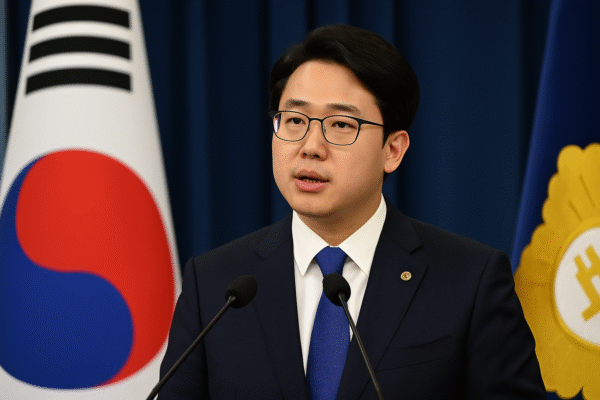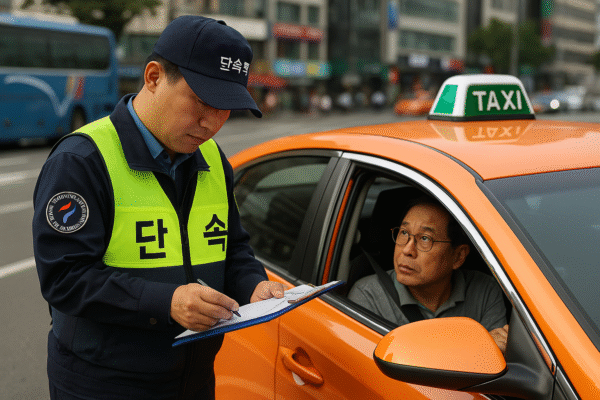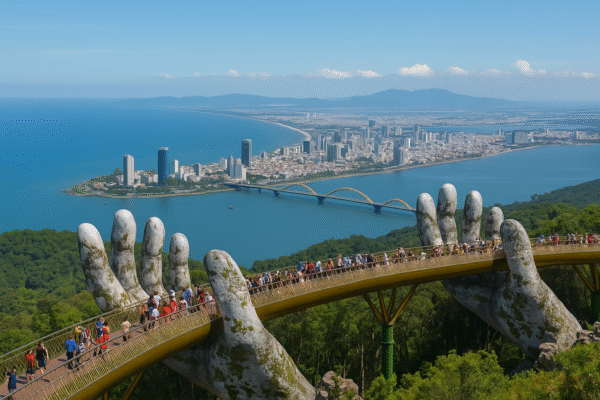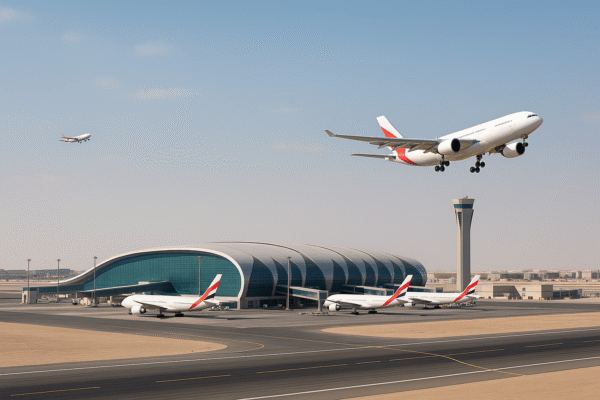Dubai, known globally for pushing the limits of urban development and technological innovation, is once again capturing global attention with its most ambitious infrastructure project to date: the expansion of Al Maktoum International Airport. Located in the Dubai South region near Jebel Ali, the airport is on track to become the world’s largest aviation hub — a futuristic gateway that will redefine the air travel experience.
Designed for the Future of Global Travel
The mega expansion of Al Maktoum International is part of Dubai’s broader Economic Agenda D33, a 10-year strategy to double the size of the city’s economy and secure its position as one of the top three global cities. Once fully developed, the airport will cover approximately 70 square kilometers, nearly five times the size of Dubai International Airport (DXB).
This next-generation aviation hub is designed to accommodate 260 million passengers annually, making it the highest-capacity airport ever built. In addition, it will have the ability to process 12 million tonnes of cargo, directly boosting Dubai’s standing in the global logistics and freight industry.
Multi-Phase Development Timeline
The development of Al Maktoum International Airport is structured in several strategic phases:
Phase 1: Completion by 2032
- Construction of the first major passenger terminal.
- Four concourses capable of handling 150 million passengers annually.
- A new set of runways, support infrastructure, and an automated people mover (APM) system for internal transit.
Phase 2: 2034–2040
- Additional concourses and terminals added to handle increased demand.
- Expanded transport links, including direct connections to the Dubai Metro and Etihad Rail systems.
- Enhanced facilities to support airline operations and passenger amenities.
Final Phase: 2040–2050
- Full completion of the airport with over 400 aircraft gates.
- Fully integrated smart transport network for passengers and freight.
- Enhanced cargo villages and logistics hubs to support international trade routes.
Technological Leap into AI and Automation
Al Maktoum International is not just a matter of size—it represents a leap in aviation technology. The airport will function as a smart, AI-driven facility. Key technological features include:
- Biometric and facial recognition systems for seamless, paperless travel.
- Automated check-in counters, self-service kiosks, and robotic staff.
- Smart baggage handling and security checkpoints powered by machine learning.
- Sustainability measures such as solar energy integration and waste reduction systems.
This smart infrastructure will offer a “borderless” travel experience, greatly minimizing waiting times and enhancing operational efficiency.
Urban Development Around the Airport
The airport is positioned at the center of the fast-developing Dubai South Aerotropolis, a fully integrated economic zone aimed at creating a dynamic urban environment around the aviation ecosystem. The surrounding district will feature:
- Residential developments planned to house nearly one million residents.
- Commercial business parks for aviation, logistics, retail, and e-commerce.
- Hotels, leisure spaces, and cultural centers supporting long-term urban growth.
This transformation of Dubai South into a multi-functional economic hub will be a vital source of job creation, foreign investment, and regional growth.
Economic Impact and Global Positioning
The sheer scale of this development positions Dubai to lead global aviation well into the 21st century. By consolidating all commercial air traffic to Al Maktoum, Dubai is ensuring long-term sustainability and the flexibility to expand without the geographic limitations facing DXB.
Economic forecasts project millions of direct and indirect jobs will be created across sectors like aviation, real estate, transportation, hospitality, and retail. Moreover, the airport’s proximity to Jebel Ali Port, one of the largest container ports in the world, ensures Dubai will become an even stronger logistics powerhouse, integrating air, sea, and land transport efficiently.
Transition from DXB to DWC
As Al Maktoum International nears completion, operations from Dubai International Airport (DXB) will gradually shift over. This transition is expected to begin by 2032 and complete by 2040. The migration is aimed at reducing congestion at DXB and bringing together all of Dubai’s passenger and cargo services under a single, future-ready airport.
Conclusion: Dubai’s Vision in Motion
Dubai has never shied away from ambitious, visionary projects, and Al Maktoum International Airport is a shining example of what the city aspires to be: the definitive global crossroads for travel, trade, and innovation.
Once completed, Al Maktoum will not only claim the title of the world’s biggest airport—it will also serve as a symbol of Dubai’s bold future, where cutting-edge technology meets strategic vision, creating an unmatched gateway to the world.
For more travel news like this, keep reading Global Travel Wire














